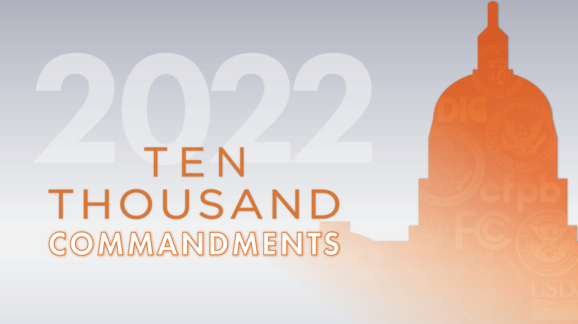Chapter 7: A Note on Notice and Rule Reviews at OMB’s Office of Information and Regulatory Affairs
Tracking the effects of rules and regulations, executive orders, memoranda, and regulatory guidance is vital. These alternative regulatory actions have become powerful means of working around the constitutional system of government envisioned by the Framers: legislation enacted by elected representatives.
Figure 18 presents the number of rule reviews conducted by the Office of Management and Budget during calendar year 2021, totaling 502, broken down by stage and by economic significance. There had been 669 total reviews under Trump. Figure 18 also shows the number of days it took OMB to review significant and non-significant rules and regulations, a process that improved recently but can take several months compared with the roughly two months shown here. Interim final rules reviewed by OMB, now standing at 58, had numbered only 11 and 12 in Trump’s first two years (see Figure 18 and Appendix: Historical Tables, Part D).

The president and Congress can ensure that more review and supervision of guidance documents and notices take place. As it stands, while agencies issued thousands of notices, Figure 18 shows that only 71 were reviewed by OMB during calendar year 2021, down from 104 in 2020. Low as these are, they are still higher than the few dozen seen most years since 1993. A history of the number of rules and notices reviewed annually by the White House Office of Information and Regulatory Affairs appears in Appendix: Historical Tables, Part D, which presents a detailed breakdown of rules reviewed by type and by average days for review from 1991 through 2021.
There had been 24 notice reviews in Trump’s first year, and 45 during 2016, Obama’s last full year. Furthermore in recent years, while not shown in these charts, OMB has reviewed several dozen notices that it deemed to have economically significant effects.
During the pre-Executive Order 12866 years of 1991–1993 (depicted in Appendix: Historical Tables, Part D), rule review times were shorter than today, although numbers of rules were considerably higher then. During the Trump administration’s first 18 months, OIRA reviewed 70 percent fewer regulatory actions than during the Obama administration and 66 percent fewer than during the George W. Bush administration. That shifted in part during the second half of the Trump administration, since 669 rule reviews in 2020 was the highest number seen since 2010, and the 199 economically significant subset of rules reviewed in 2020 was the highest ever. Under Biden, 2021’s economically significant rules reviewed stood at 172 (Figure 17).
